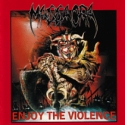Journalist Nathan Birk went in investigation of the Blasphemy phenomenon, and was able to wrest an interview from these guys 20+ years past their original works of hateful, apostatic skinhead black metal/grindcore crossover. Excerpts from the interview are published on the Zero Tolerance blog. Some insights:
Both Blasphemy albums are equally classic in my opinion, but why do you think Fallen Angel Of Doom resounds so powerfully with so many people over a number of generations?
DeathLord: Blasphemy were focused only on Blasphemy during the Fallen Angel Of Doom era. Soon after that, even as early as the Gods Of War era, their energies were spread to other interests.
Black Winds: Let me put it to you this way – I wrote the song ‘Blood Upon The Altar’ from Gods Of War after a bottle and a half of tequila!
Maybe… because Fallen Angel of Doom is the far better album.
While Blasphemy have certainly wielded a global influence on new generations of black/death metal, it seems the biggest pockets of influence are situated in the US, Canada, Australia, and parts of South America and South East Asia – to what do you attribute this to? That Blasphemy wield influence on countries that are…well, less purely ‘white’?
DeathLord: Where do you get this information?! I can find you 25 Burzum clones from Brazil and another 10 from Australia! Also, Burzum record sales are better than Blasphemy record sales in every country you mentioned, so explain why these “less purely white” people are into that style? All metal, all genres, is a worldwide phenomenon. You are obviously speaking about Europe in this question, yet we get the most requests to bring our live ritual out there and I get the most orders for Blasphemy merchandise from there, too. And to add to this, it doesn’t get more ‘white’ than Finland, yet I hear Beherit, Satanic Evil, early Impaled Nazarene, Archgoat, and newer bands like OfDoom and Black Feast, etc, that have a distinct bestial sound with a Blasphemy influence. Blasphemy are indeed “global” and equally listened to, per capita, in all regions of the world. I know this firsthand through my distro and contacts.
Black Winds: The South Americans are probably the biggest black metallers in the world. If we played a show down there with Mystifier or Impurity or someone, there would be thousands there! Traditional Sodomizer’s band Tyrants Blood just played down there, and it was crazy! We don’t notice skin colour, only how black metal people are.
He ducked the question with a false comparison.
So, how would you address charges of Blasphemy ‘resting on your laurels’? Meaning, playing those reunion shows but without any new material in almost two decades…?
Black Winds: Tough. If you don’t like it, don’t come and see it.
DeathLord: Have you ever noticed that people go crazy at a show when the band plays their old songs and are bored to tears when they do a set of newer material? Well, we don’t only hype up the crowd with a few old tunes, we play them ALL! They are eaten up with total frenzy for the entire duration of the live ritual! But, to answer your question, we’re Blasphemy and we do whatever the fuck we want! We don’t answer to any “charges” against us.
Well, it’s sensible. If you’re not going to be able to write newer material that’s better than the old stuff, you should just play the old stuff.
Interesting how bands like BEHERIT continued improving, BURZUM sold out worse than Metallica after peaking late, and ENSLAVED have become something entirely different, namely a hard rock/jam band. BLASPHEMY have stayed true to their roots, even if their answers in this interview aren’t entirely logical. Birk asks the right questions; he could ask all the old stuff, but instead he asked them about their place in the metal canon, and got some intriguing answers.
Read the interview here: Crime (and Powerlifting) Pays — An Interview with Blasphemy
No Comments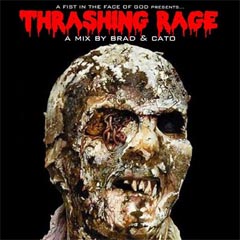 The lads over at A FIST IN THE ASS OF GOD have put together a compilation of undernoticed speed metal bands from the 1980s and 1990s. If you love this stuff, it’s quite good; if you don’t, it’s some of the more interesting edges of the genre so you can finally get “For Whom the Bell Tolls” out of your head.
The lads over at A FIST IN THE ASS OF GOD have put together a compilation of undernoticed speed metal bands from the 1980s and 1990s. If you love this stuff, it’s quite good; if you don’t, it’s some of the more interesting edges of the genre so you can finally get “For Whom the Bell Tolls” out of your head.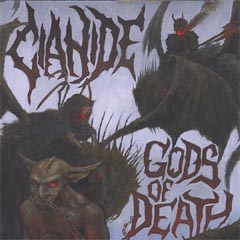 We who still love metal walk a fine line between the sold out nu-hardcore stylings of metalcore, and the tendency to hop on the bandwagon of the old school too much; the previous Cianide, Hell’s Rebirth, walked too far on the old school side — when a band loses direction, they imitate successful techniques and patterns from the past without knowing what those patterns evoked in the listeners.
We who still love metal walk a fine line between the sold out nu-hardcore stylings of metalcore, and the tendency to hop on the bandwagon of the old school too much; the previous Cianide, Hell’s Rebirth, walked too far on the old school side — when a band loses direction, they imitate successful techniques and patterns from the past without knowing what those patterns evoked in the listeners.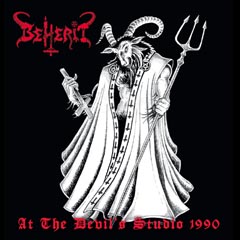 I am really glad this recording is not the final form these songs took, but I am equally glad to be able to hear them in this form. Most people will compare this to The Oath of Black Blood, but it reminds me more of the later EPs, although it’s in the style of The Oath of Black Blood.
I am really glad this recording is not the final form these songs took, but I am equally glad to be able to hear them in this form. Most people will compare this to The Oath of Black Blood, but it reminds me more of the later EPs, although it’s in the style of The Oath of Black Blood.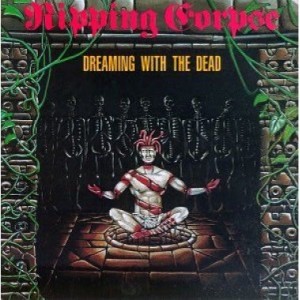
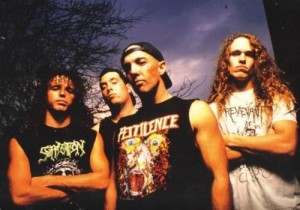 Although the adverse effect of retaining such past influences would be that some later songs still structure themselves around anthemic choruses – a burden that most of Ripping Corpse’s contemporaries had already evolved far beyond – the band manages to employ enough compexity in their compositions to keep up with the demands of their vision. The sound of the guitars may be construed as being weak or mixed poorly, but this lighter texture lends itself well to the progression of riffs from measured punctuations of rhythm to insane variations by way of fucked up artificial harmonics and blastbeaten tremolo sequences. Tempo blurs the lines of what is considered primitive, though the act may be embellished with the jewels of modern society or justified in the name of some ideology. As layers of humanity are removed from the conscious mind, lead guitars erratically and uncontrollably rip through passages and bring a microcosmic level of culmination within a song, like the fleeting screams of demons being exorcised from a long tortured soul.
Although the adverse effect of retaining such past influences would be that some later songs still structure themselves around anthemic choruses – a burden that most of Ripping Corpse’s contemporaries had already evolved far beyond – the band manages to employ enough compexity in their compositions to keep up with the demands of their vision. The sound of the guitars may be construed as being weak or mixed poorly, but this lighter texture lends itself well to the progression of riffs from measured punctuations of rhythm to insane variations by way of fucked up artificial harmonics and blastbeaten tremolo sequences. Tempo blurs the lines of what is considered primitive, though the act may be embellished with the jewels of modern society or justified in the name of some ideology. As layers of humanity are removed from the conscious mind, lead guitars erratically and uncontrollably rip through passages and bring a microcosmic level of culmination within a song, like the fleeting screams of demons being exorcised from a long tortured soul.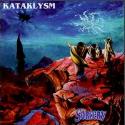 versus
versus 
 versus
versus 